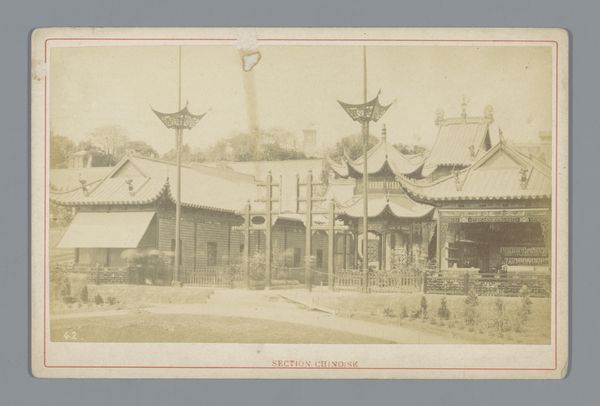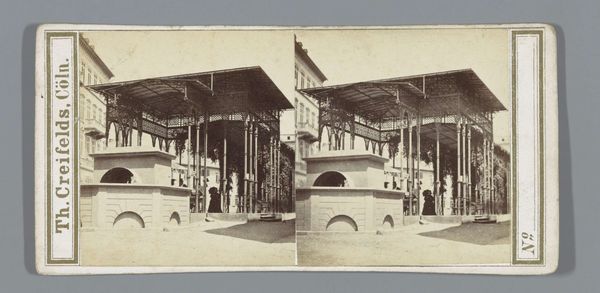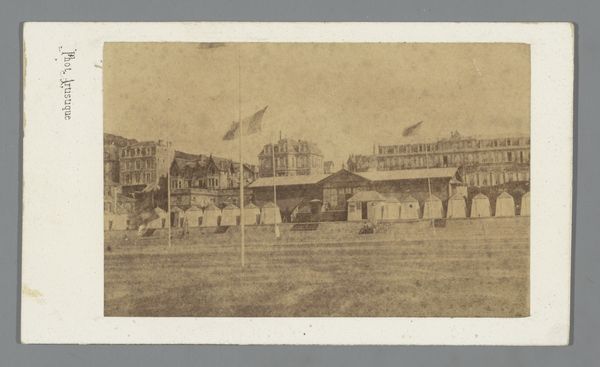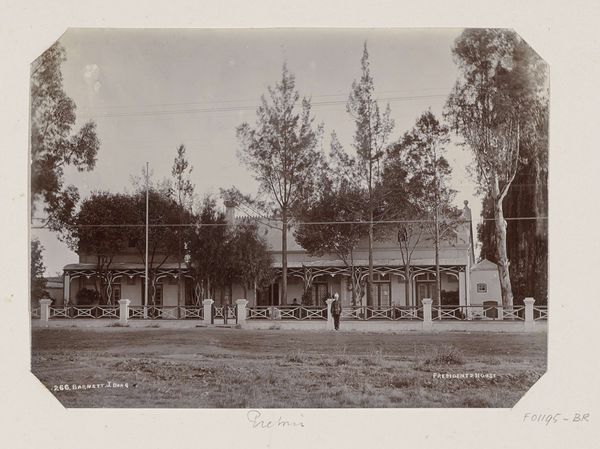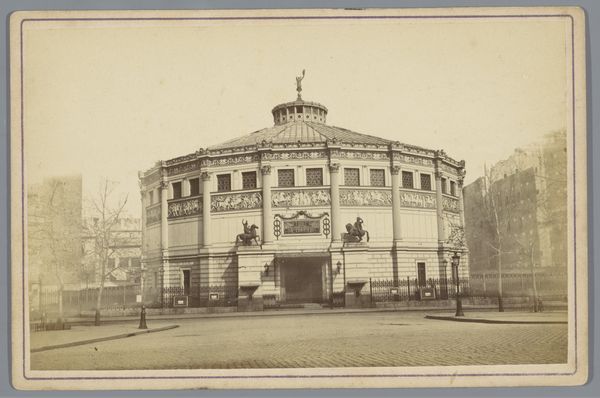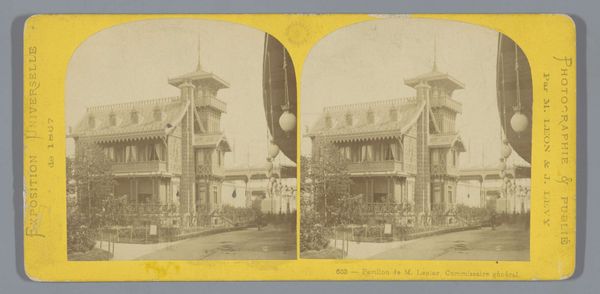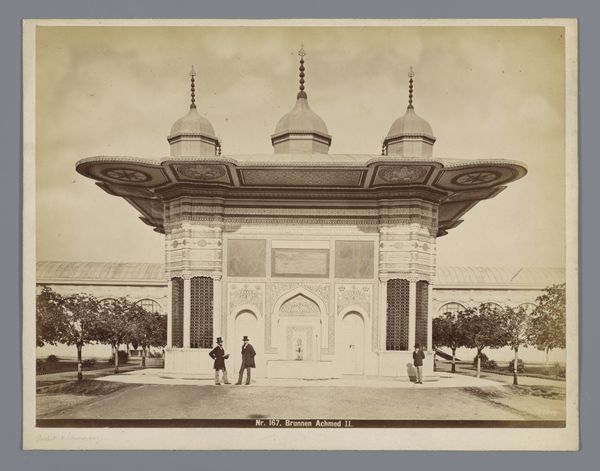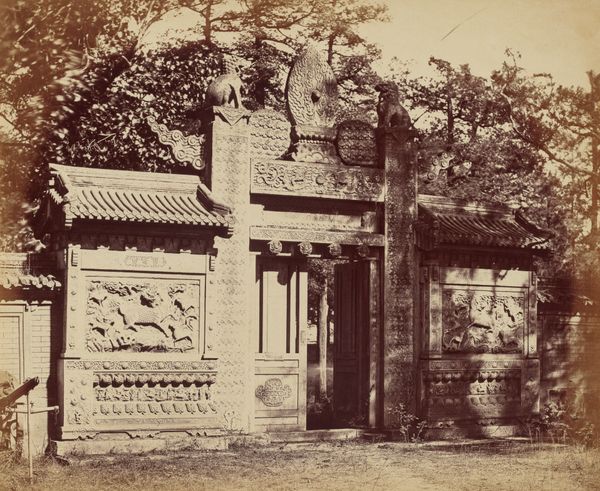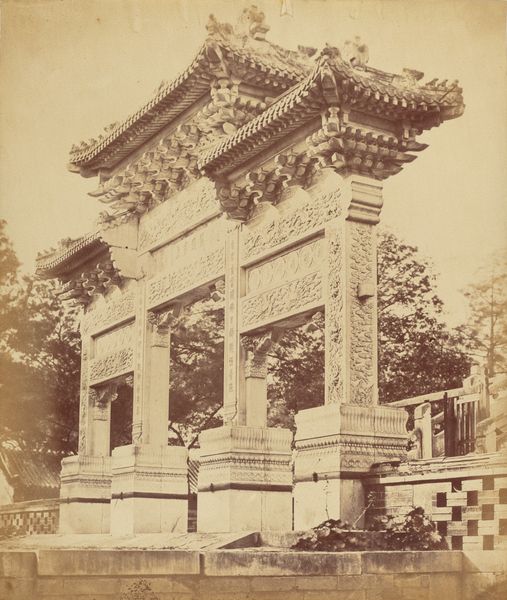
print, daguerreotype, photography
# print
#
asian-art
#
daguerreotype
#
historic architecture
#
photography
#
19th century
#
cityscape
#
islamic-art
Dimensions: image: 25 × 27.7 cm (9 13/16 × 10 7/8 in.) mount: 25.3 × 29.8 cm (9 15/16 × 11 3/4 in.)
Copyright: National Gallery of Art: CC0 1.0
Curator: This albumen print, "Shops and Street, Chinese City of Pekin, October 1860," by Felice Beato, offers a glimpse into a world undergoing immense change due to colonial encounters. What are your immediate impressions? Editor: The intricacy of the architecture stands out. The textures of the wood, the lattice patterns, the ornamental dragons, and what appear to be chimneys—all rendered in sepia tones—create a mesmerizing, if slightly melancholic, harmony. Curator: Beato was documenting the aftermath of the Second Opium War, a conflict that dramatically altered China's relationship with Western powers. These shops likely reflect both traditional Chinese commerce and the nascent influence of foreign trade. Editor: Looking closely at the formal elements, I'm struck by the linear perspective guiding the eye toward the vanishing point in the distance. It contrasts sharply with the flatness of the façade, an intricate layering of pattern upon pattern. Curator: The photograph becomes a record of cultural negotiation. Consider that Beato himself was part of this incursion; this documentation inevitably carries with it an element of colonial observation. Editor: That may be true. Still, focusing on the inherent qualities of this particular section in the city of Pekin reveals a structured but lively space, where shadow and light interplay across its many decorative surfaces. The arrangement of these architectural components guides our eye along the frame, encouraging us to consider the relationships between distinct, interconnected details. Curator: Precisely, Beato wasn't merely capturing a static scene. He captured a society grappling with imposed external pressures. He froze a moment ripe with social and political tension, visible through the architecture and its inhabitants who are on the ground, caught forever as a vignette. Editor: Whether this vignette is charged with the colonial gaze or a sensitive capture is ultimately a matter of perspective. The beauty of art, like history, lies in its capacity for multifaceted readings. Curator: Yes, the layered textures both literal and historical encourage dialogue. Perhaps that ongoing discussion ensures such artwork is always fresh.
Comments
No comments
Be the first to comment and join the conversation on the ultimate creative platform.
